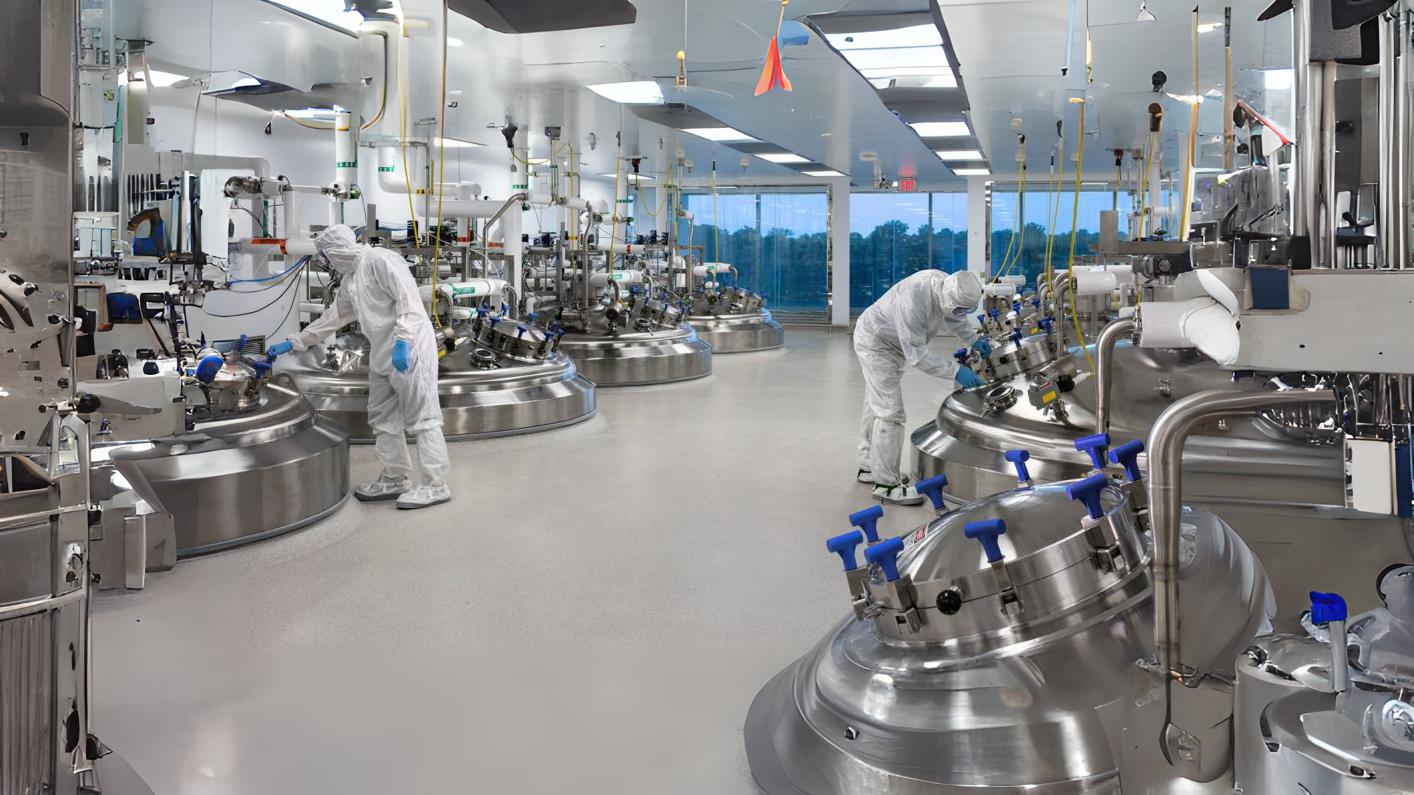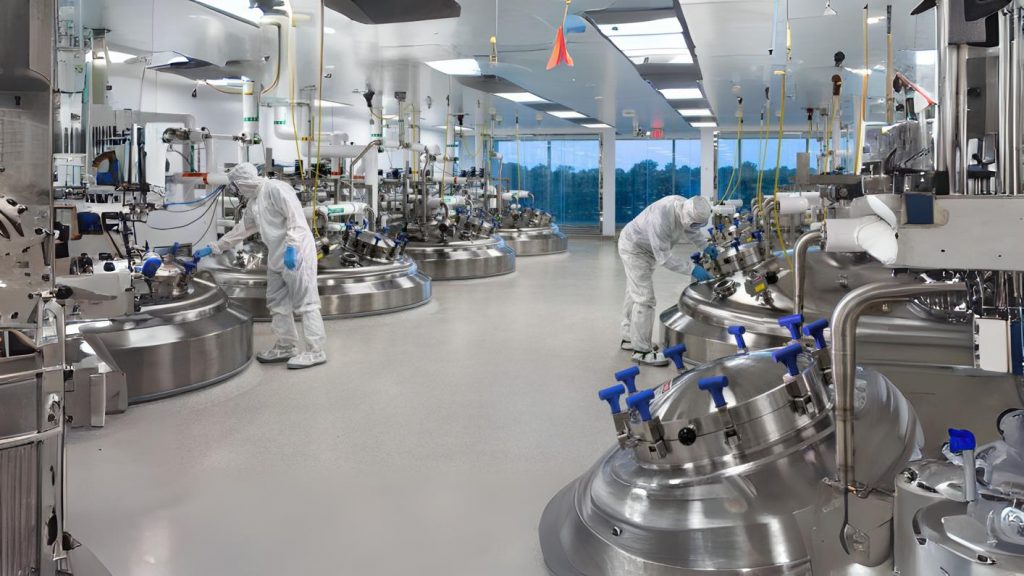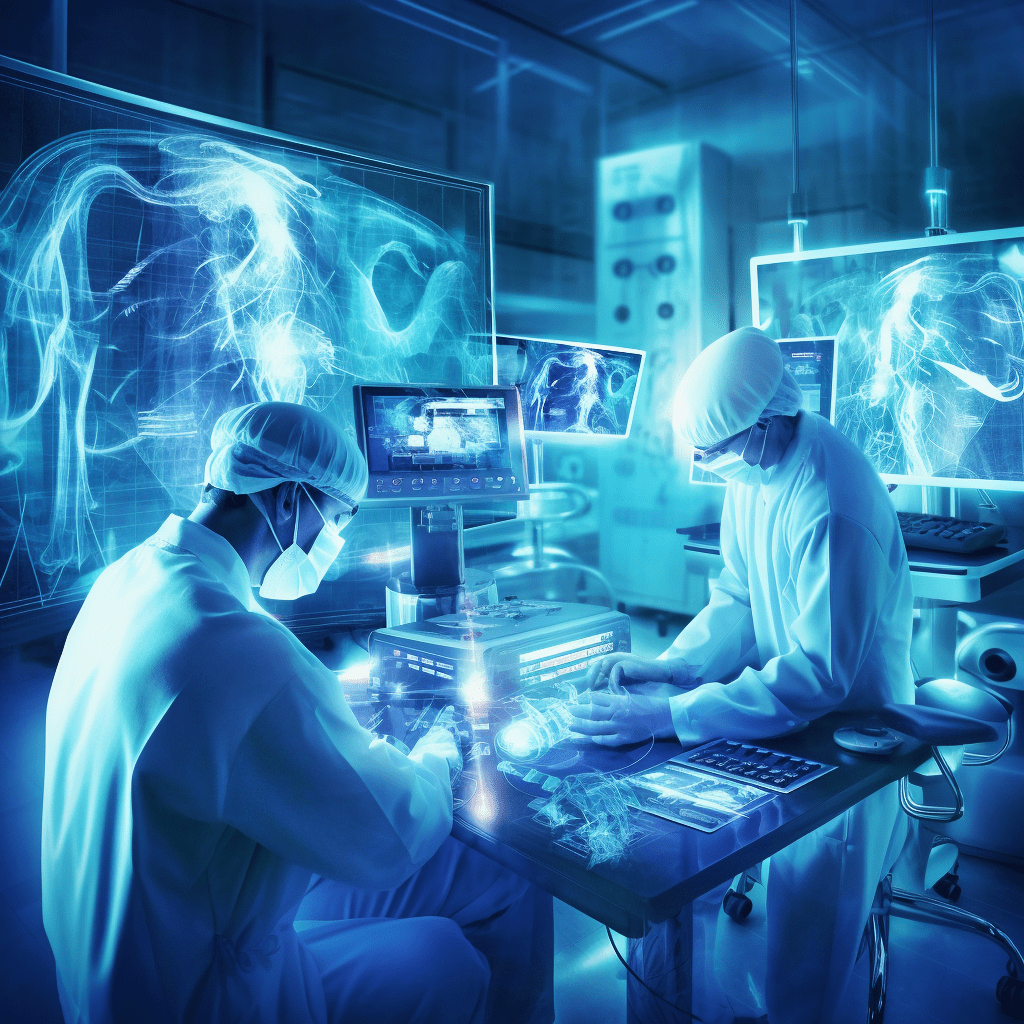Challenges and Opportunities in Pharmaceutical Manufacturing
 5 years ago
By Charlotte Di Salvo
5 years ago
By Charlotte Di Salvo

The rapid change in demand for pharmaceutical products during the COVID-19 pandemic sent shockwaves throughout the industry. Since the start of the crisis, pharma manufacturers have implemented a number of innovations to streamline the production process from start to finish. Single-use technologies and continuous manufacturing are a few ways the industry has adapted to improve drug manufacturing.
For daily articles on the latest pharma trends and innovations, as well as interviews with leading experts and in-depth industry White Papers, subscribe to PharmaFeatures.com.
Introduction to a pharmaceutical manufacturing
Biopharmaceutical manufacturing is divided into two main categories: small molecules and biologics. A small molecule drug is defined as “any organic compound with low molecular weight…small molecule drugs have some distinct advantages as therapeutics”. A large proportion of small molecule drugs are administered orally and can be designed according to a specific criteria.
Biologics, on the other hand, are a group of drugs “whose active ingredients are sourced from living organisms that have been specifically modified to produce the desired molecules”. In comparison with small molecules which are chemically synthesised, biologics are typically large molecules like proteins which are grown within an organic system.
Both types of drugs have their own advantages with regards to therapeutic action. Small molecules can be designed to alter the pharmacokinetics of the drug in order to optimise drug delivery, distribution and metabolism within the body. Biologics on the other hand “mimic the normal complex function(s) of proteins within the body” which cannot necessarily be replicated by foreign small molecules.
Due to early-generation biologics beginning to lose patent protection, pharmaceutical companies began several years ago to develop products biologically similar to existing biologics. These drugs are called biosimilars and are “the generic version of a biologic drug developed for launch post the patent expiry of the original drug”.
Manufacturing challenges
In order to develop a biosimilar medicine, pharma companies require spending a significant amount of time and money to ensure the drug meets the desired safety profile and therapeutic efficacy. “This means extensively identifying and comparing the structural and functional properties of the biosimilar, using state-of-the-art technology.”
Ensuring the biosimilar meets comparative structural and functional features is critical in providing the greatest chance of clinical success.
As organic compounds, biologics represent a group of highly fragile drugs which could potentially fail at any point in the manufacturing process. Proteins, for example, are susceptible to degradation if not kept under optimal conditions such as temperature control or stable pH levels. The challenges of manufacturing biologics are considered greater than the chemical synthesis of small molecules as the “manufacturing processes involving living cells are inherently more variable than components involved in chemical synthesis”.
Due to the number of challenges that compromise the success of drug manufacturers, the industry is working together to develop strategies to address some of the ongoing issues.
Challenges and solutions
The long approval timeline is one of the greatest challenges for pharmaceutical companies. For biosimilars and biologics especially, the timeline for manufacturing is often extended due to a number of reasons. Breaches in sterility, for example, can result in temporary halts in production, disposal of vast quantities of contaminated drugs, and in some cases, the shutdown of a manufacturing plant. All of these consequences arise from a single problem and cost pharma companies an extortionate amount of money.
Single-use technology
As a solution, single-use technology is rapidly emerging in aseptic practices across the pharmaceutical industry, with the potential to reduce cross-contamination risk. This type of equipment can reduce costs by eliminating the need for in-house sterilisation. Examples include chromatography devices, bioreactors and ion exchange membranes.
One of the main benefits for single use equipment is sterility assurance during the manufacturing process. This is achieved by a reduction in the “possibility of cross-transference of microorganisms; minimising the risk of environmental microbial contamination”. The risk of cross-contamination especially is greatly reduced with the avoidance of cleaning components, thanks to single use equipment.
Continuous manufacturing
Batch-to-batch production has been a core part of pharmaceutical manufacturing, however the variability that can arise between batches has seen a shift towards continuous manufacturing. Continuous manufacturing offers a number of advantages over batch manufacturing, as described in an article by the FDA:
• Continuous manufacturing is moved non-stop within the same facility, eliminating hold times between steps.
• Material is fed through an assembly line of fully integrated components. This method saves time, reduces the likelihood for human error, and can respond more nimbly to market changes.
• To account for higher demand, continuous manufacturing can run for a longer period of time, which may reduce the likelihood of drug shortages.
Demand forecasting
The COVID-19 pandemic has shown how demand for bioproducts can soar within a short space of time, and while some of the smaller biotechs were able to cope to meet demand, a number of the larger pharmaceutical companies struggled. Developing adaptability to short-term demand fluctuations is a target now for many manufacturers in order to manage increased demand and any rapid changes that may occur.
Real time demand forecasts have been suggested as a solution to support pharma manufacturing. “The supply chain of pharmaceutical products is characterised by high complexity, and supply and delivery channels to customers are limited and highly regulated. The complexity is considered as one of the main barriers to performance and efficiency improvements of a pharmaceutical supply chain”.
• Any mismatch between demand and supply could ripple through the drug distribution channel and impact the patients, sometimes even causing life-threatening situations
• Any demand that is not fulfilled could potentially lead to permanent lost sales from a patient, because patients who cannot afford the uncertainty in their order fulfillment may switch to an alternative drug. For drugs treating chronic illnesses, this could mean huge financial losses for the drug manufacturer.
Currently, the data used for demand forecasting is based on historical sales and is interpreted through simple models such as exponential smoothing and linear regression models. One of the main challenges to address in demand forecasting is developing more in-depth statistical software that can capture complex patterns within historical data. Machine learning is also beginning to emerge within demand forecasting. This is currently very early in development, but may show a more defined presence in the years to come.
Charlotte Di Salvo, Junior Medical Writer
Proventa International

Navigating the Complex World of Global Regulatory Affairs in Oncology
In today's fast-paced global pharmaceutical landscape, the regulatory affairs sector plays a pivotal role in ensuring the safety, efficacy, and market access of oncology drugs. As the demand for innovative cancer therapies continues to grow, understanding the intricacies of global...
2 years agoNavigating the Complex World of Global Regulatory Affairs in Oncology
In today's fast-paced global pharmaceutical landscape, the regulatory affairs sector plays a pivotal role in ensuring the safety, efficacy, and market access of oncology drugs. As the demand for innovative cancer therapies continues to grow, understanding the intricacies of global...
2 years ago
Overcoming the Hurdles: Navigating the Challenges in Oncology Clinical Trials
In the world of medical research, oncology clinical trials are at the forefront of innovation and discovery. These trials play a crucial role in advancing our understanding of cancer and developing more effective treatments. However, the path to successful oncology...
2 years agoOvercoming the Hurdles: Navigating the Challenges in Oncology Clinical Trials
In the world of medical research, oncology clinical trials are at the forefront of innovation and discovery. These trials play a crucial role in advancing our understanding of cancer and developing more effective treatments. However, the path to successful oncology...
2 years ago
Embracing a Patient-Centric Approach in Oncology Trials
In the realm of healthcare and medical research, the term "patient-centric" has gained significant traction in recent years. This shift in focus towards prioritizing patients' needs and preferences is not only transforming the healthcare industry but is also making waves...
2 years agoEmbracing a Patient-Centric Approach in Oncology Trials
In the realm of healthcare and medical research, the term "patient-centric" has gained significant traction in recent years. This shift in focus towards prioritizing patients' needs and preferences is not only transforming the healthcare industry but is also making waves...
2 years ago